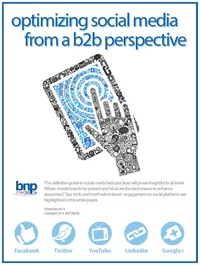Report from RadTech


The sessions at the three-day Technical Conference covered a range of topics, including electron beam, specialty applications, analytical and measurement, photoinitiators, photovoltaics, kinetics, formulation of coatings, equipment, nanotechnology, renewable raw materials, equipment LEDs, thiol-ene chemistry, and wood and floor coatings. The conference also included end-user sessions and industry roundtable discussions, as well as sessions on Japan and China, where speakers from those countries highlighted the latest in UV/EB technology in their regions.
According to Dr. Mike Idacavage, who serves as RadTech North America’s President, and who is a principal research fellow at Cytec Industries Inc., the Technical Conference is now the largest global conference devoted to UV and EB technology, and has evolved over the years to accommodate the needs of this growing industry.
The exhibit hall also showed optimism for the future of UV/EB technology. Exhibitors showcased a variety of equipment and raw materials on the show floor. Experts from Sartomer USA, LLC, gave six original presentations on the use of monomers and oligomers at the Technical Conference, addressing topics from barrier performance in cured polymers to adhesion in direct-to-metal applications. Company experts were on hand at the company’s booth to answer questions regarding the presentations and on the oligomers and monomers featured at the booth.
Unimin Corp. attended its first RadTech event this year, as both an exhibitor and a presenter at the Conference. The presentation focused on using ultrafine nepheline syenite as a durable and transparent additive to accelerate radiation cure. The Unimin booth highlighted the company’s line of Minex® functional fillers and extenders.
Lubrizol’s booth featured SOLSPERSE J100, a 40%-active polymeric dispersant in phenoxy ethyl acrylate that is recommended for use in UV-cured inkjet inks based on acrylate monomers and oligomers. The polymeric dispersant is effective on a range of pigments applicable to this sector, such as Pigment Yellow 139, Pigment Yellow 150, Pigment Red 122, Pigment Blue 15.4 and carbon black.
RadTech was BASF’s first opportunity to demonstrate the benefits of its recent acquisition of Ciba to the UV/EB-curable industry. One example of how BASF creates chemistry for the industry is its research into providing improved efficiency and a lower carbon footprint for photocuring. The company is also focusing efforts on the development of photoinitiators and photolatent catalysts. BASF also presented two technical papers at the Conference.
Cytec Industries Inc. had four presentations related to UV/EB-curable resins and additives. Topics included low-energy-curable coatings, a polymer chemistry short course for the UV/EB professional, UV-curable waterborne chemistry for wood furniture applications, and field-applied UV-curable floor coatings.
Phoseon® Technology featured its Semiconductor Light Matrix (SLM)™ Technology for UV LED curing. SLM technology combines a dense array of light-emitting semiconductor devices with micro optics and advanced thermal technology. The result is a high-intensity UV light system that offers an efficient, scalable, safe and environmentally friendly alternative to traditional mercury-based UV lamps.
Evonik Degussa offered ACEMATT® Matting Agent EXP 3600, a polysiloxane, surface-treated, fine-particle-size silica. This product is specially designed for low-gloss, radiation-curable coatings. Benefits of this matting agent include easy dispersion, excellent transparency, high mar and scratch resistance, and outstanding matting efficiency.
Evonik’s Tego division featured its TEGO® Rad series of crosslinkable, acrylate-functional additives for energy-curing formulations. These are surface-control additives that improve slip, substrate wetting, scratch resistance, flow and leveling. The company also offers wetting and dispersing additives for radiation-curing inks. TEGO Dispers 685 additive is optimally suited for organic and carbon black pigments. It also stabilizes TiO2 well and increases gloss.
Nanophase Technologies Corp. featured its NanoArc® aluminum oxide products for scratch and mar resistance. Nanophase metal oxide nanoparticles are available in a variety of concentrated dispersion forms, each featuring proprietary surface treatment technology to ensure complete dispersion to the primary particles and to prevent any aggregation upon incorporation into application systems. Markets include automotive, electronics, hard surfaces and plastics.
Bayer MaterialScience featured many products at its booth, and presented several papers as well. In terms of water-based technology, the company highlighted its sunshine-cure polyurethane dispersion deck coatings. UV-curable polyurethane dispersions are a go-to coatings choice for the wood and furniture market due to their high productivity, low VOCs and excellent performance. Now, the company has expanded its application into the exterior wood site-applied decking market. According to Charles Gambino, R&D Specialist, Bayer MaterialScience LLC, “The results of the testing confirm that sunshine provides enough energy to crosslink UV-cure PUDs that will provide several years of performance on exterior decking. We have found that for outdoor applications the sun provides sufficient curing compared to artificial light.”
For the high-solids market, Bayer scientists have refined polyurethane chemistry, subsequently leading to the development of a new generation of products for UV coatings – acrylated allophanate oligomers. The presentation discussed how allophanate-based oligomers compare in common tests with the performance of isocyanurate-based oligomers. Outdoor stability, application on engineered plastics, weathering data, success of direct-to-metal applications and salt spray tests were all covered.
Shamrock showcased its wax line of emulsion products, as well as other products, including low-foaming PTFE dispersions that offer exceptional quality and performance.
This is just a small sampling of the technology featured at the RadTech event. The sense of optimism on both the show floor and at the Conference, and the increased number of end users attending the event, indicate that the radiation curing market continues to grow as more people learn about the possibilities of this technology.
Looking for a reprint of this article?
From high-res PDFs to custom plaques, order your copy today!









